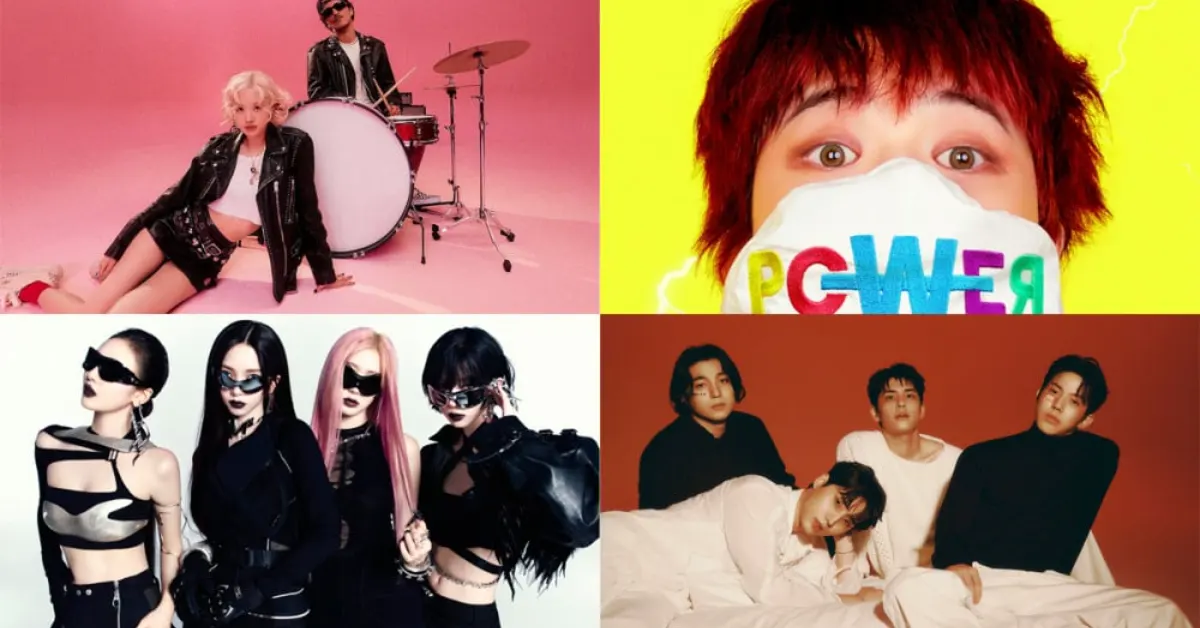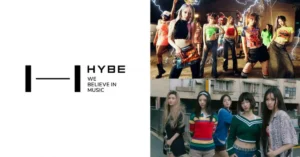Days after the release of the HYBE Industry Trend Reports sparked debate across the K-pop industry, netizens observe a shift back to what they consider a “normal” music scene. This shift is underscored by the recent dominance of artists from the “Big 3” companies—YG Entertainment, SM Entertainment, and JYP Entertainment—on Melon’s TOP100 chart, with HYBE-associated acts seeing less influence amid the backlash.
HYBE’s “Industry Trend Reports” and Its Repercussions
The controversial HYBE Industry Trend Reports were widely circulated recently, provoking a storm of criticism that affected both HYBE Corporation and its affiliated artists, including Seventeen, LE SSERAFIM, TOMORROW x TOGETHER, and ILLIT. The reports led to discussions among fans and critics alike, with claims that HYBE’s marketing tactics, particularly its use of “viral marketing,” were diminishing the perceived quality and authenticity of music chart rankings.
In a timely overlap, several of K-pop’s iconic figures released new music, reinforcing a sense of “normalcy” in the industry. BLACKPINK members Jennie and Rosé made waves with their solo projects—Jennie’s “Mantra” and Rosé’s “APT.” featuring Bruno Mars—which marked new chapters in their careers. Most recently, on October 31 KST, Big Bang’s G-Dragon returned with “Power,” his first release in seven years. The popularity of these releases contributed to the resurgence of “Big 3” soundtracks on Melon’s chart.
Melon’s Top 10: Big 3 Artists Take the Lead
As of November 1, 2024, at 11 AM KST, Melon’s TOP100 chart showed a reestablished lineup of artists linked to the traditional “Big 3” companies. The top 10 included BLACKPINK’s Jennie and Rosé as well as G-Dragon from YG Entertainment, aespa from SM Entertainment, and DAY6 representing JYP Entertainment. This surge has been noted by fans and netizens as a return to the “classic” K-pop chart landscape.

Netizens’ Reactions to the “Return to Normalcy” in K-pop Charts
Korean netizens have expressed their opinions on social media and online forums regarding this recent shift, with many seeing the chart’s latest configuration as a reflection of “real” musical talent rather than viral influence. Here are some of the key reactions:
“Those HYBE execs must be having seizures right now.”
“The big three companies HYBE wanted to bring down so badly are all doing just fine kekekeke.”
“If anyone at HYBE knew anything about music, this should be proof enough that music quality matters over anything else but… they’ll probably never get it.”
“Technically, GD and BLACKPINK don’t represent YG anymore, but it’s the vibe that matters I guess. It sucks for YG that they couldn’t keep them around lol.”
“Bang Si Hyuk is ‘highly sensitive’ to the reactions on online communities, right? I wonder how he feels about this kekekeke.”
“This chart is the STANDARD.”
“Finally, I’m so happy that there are no artists from that one company (HYBE) in the top 10.”
“No one is saying that YG, SM, or JYP are angels for companies, but at the very least, they still care about music quality and don’t waste all their money and resources on viral marketing.”
“It felt like for such a long time, I would look at the charts and be like, ‘Who..?’. Now, it feels like it’s been refreshed.”
“I can accept this chart as the current top 10. It represents the top artists of 2nd gen, 3rd gen, and 4th gen.”
“My eyes and ears feel cleansed.”
“Time to Bye-bye to all those HYBE songs that no one actually knew.”
“For the first time in forever, the chart is normal!”
Industry Impact and Future Implications
While some speculate that the drop in HYBE-affiliated acts on the charts could signal changes in audience preferences, others see this shift as an isolated response tied to the recent controversy. The ongoing dominance of artists linked to the “Big 3” companies underscores their enduring influence in the industry, especially among older K-pop fans who feel a sense of nostalgia for their music.
ALSO READ:
For more updates on these developments in the K-pop music industry, stay tuned to Vviptimes.


















